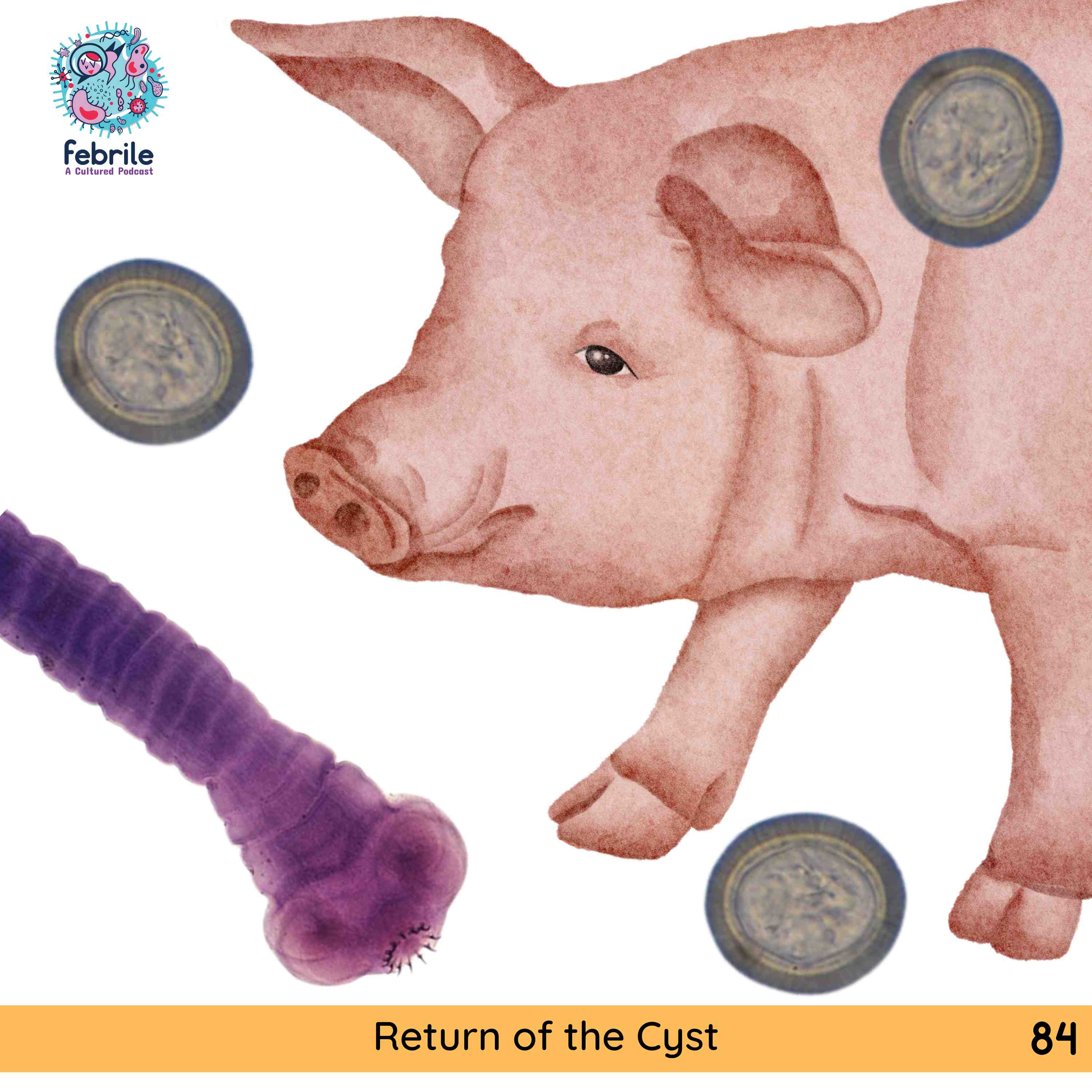Table of Contents
Credits
Host(s): Christine Pho, Sara Dong
Guest: Daniel Stanton, Clinton White
Writing: Daniel Stanton
Producing/Editing/Cover Art: Sara Dong
Our Guests
Christine Pho

Christine Pho is currently a fourth year medical student at University of Texas Southwestern Medical School in Dallas, Texas and plans to train in internal medicine residency
Daniel Stanton

Daniel Stanton is a first year adult ID fellow at University of Texas Medical Branch – Galveston, where he also completed medical school and residency
Clinton White MD, FACP FIDSA FASTMH

Clinton White is a Professor of Medicine in the Infectious Disease Division and Professor of Molecular Virology and Microbiology at UTMB. He is a graduate of Indiana University where he received his MD degree. He completed his internship and residency in internal medicine at the University of Washington, and his fellowship in Infectious Diseases at Yale University School of Medicine. He has received numerous honors in his career for excellence in education and research. Dr. White’s clinical interests / expertise include parasitology, tropical medicine, HIV, and opportunistic infections. He serves on the editorial board of a number of journals and directs the IDSA-ASTMH guidelines committee for neurocysticercosis
Culture
- Christine mentioned a few Asian American fusion restaurants: Blood Bros Bbq in Houston and Cris and John in Dallas
- Daniel recently visited the Disney World Star Wars theme park and made his own lightsaber
- Clinton shared his recent piano music listening, including Chopin’s Nocturne No. 1 and Eric Satie pieces
Consult Notes
Consult Q
41 year old male with headache, nausea/vomiting, weight loss, and sudden falls
Key Points
Neurocysticercosis (NCC)
- This infection is caused by the larval stage of the pork tapeworm Taenia solium
- NCC can be divided into:
- Parenchymal form
- Extraparenchymal forms: intraventricular, subarachnoid, spinal, ocular disease
- Check out the guidelines on NCC:
- 2021 WHO guidelines on management of Taenia solium neurocysticercosis
- 2018 IDSA/ASTMH Clinical Practice Guidelines: White AC Jr, Coyle CM, Rajshekhar V, et al. Diagnosis and Treatment of Neurocysticercosis: 2017 Clinical Practice Guidelines by the Infectious Diseases Society of America (IDSA) and the American Society of Tropical Medicine and Hygiene (ASTMH). Clin Infect Dis. 2018;66(8):e49-e75. doi:10.1093/cid/cix1084
- In addition to Dr. White featured on this episode, you can also learn more about NCC from Dr. Christina Coyle in episode #64 – Revenge of the Cyst
- Check out those Consult Notes for more background on NCC as well!
Clinton reiterated some key points he founds particularly important and building upon Febrile episode #64 with Dr. Christina Coyle.
- NCC is a series of diseases, not just one infection → if someone told you a patient had a Staph infection, you’d want to know about the clinical details as they might have varying management!
- You can have multiple different forms at the same time – extraparenchymal and intraparenchymal disease can coexist
- Generally seizures are associated with parenchymal disease, while extraparenchymal cysts are associated with symptoms of elevated intracranial pressure, hydrocephalus +/- altered mental status
- Treat the most serious/severe form of infection present
Definitely check out the prior Consult Notes #64 for more details on the life cycle, clinical manifestations, classification, and diagnosis of NCC
- One unique feature of this episode’s case was Bruns’ syndrome. This occurs when a cysticercosis lesion typically in the third or fourth ventricle moves around when you change positions and causes a sudden paroxysm of acute obstructive hydrocephalus leading to headache, vertigo, vomiting, or drop attacks like in this example
- Here is a letter that Clinton wrote about Bruns syndrome: White AC. Bruns Syndrome is a Common Presentation of Neurocysticercosis. Am J Trop Med Hyg. 2015;93(3):672. doi:10.4269/ajtmh.15-0374a
These Consult Notes will focus most on management!
- Initial management is focused on controlling acute symptoms when present such as:
- Increased intracranial pressure (via surgical intervention and/or corticosteroids)
- Management of obstructive hydrocephalus usually consists of surgical approach to remove obstructing cysticercus or placement of external ventricular drain or shunt
- Seizures (via antiseizure medications)
- Increased intracranial pressure (via surgical intervention and/or corticosteroids)
- **Antiparasitic therapy is never urgent and should only be a consideration after initial symptomatic therapy**
—
- Management of parenchymal disease
- All patients should have ophthalmologic exam to exclude ocular cysticercosis
- Antiparasitic therapy is warranted for those with viable and/or degenerating cysts on neuroimaging
- Antiparasitics should NOT be given if:
- Untreated hydrocephalus
- Diffuse cerebral edema associated with numerous parasites (eg, cysticercal encephalitis)
- Presence of calcified lesions only
- Treatment regimens include:
- Albendazole for those with 1-2 cysts
- Combination therapy with albendazole + praziquantel for those with >2 cysts
- Praziquantel is parasiticidal in itself but also elevates levels of the active metabolite of albendazole to give higher steady state levels
- Typical duration is 7-14 days
- Adjunctive steroids should be given prior to and during antiparasitic therapy, although the optimal regimen is uncertain
- Steroids are not routinely warranted for those with calcified lesions and perilesional edema
- As a quick note, disseminated parenchymal NCC (cysticercal encephalitis) refers to patients with 20+ lesions with diffuse cerebral edema
- Remember that antiparasitic therapy is contraindicated
- Most of these cases can be improved with high dose steroids, but regimen/duration should be individualized
- Management of extraparenchymal disease
- As noted previously, increased intracranial pressure should be managed via surgical intervention and/or steroids
- Intraventricular NCC and obstructive hydrocephalus may require emergent CSF diversion via ventriculostomy, placement of ventriculoperitoneal shunt, or neuroendoscopic cyst removal and third ventriculostomy
- Subarachnoid (Racemose) NCC and communicating hydrocephalus management consists of CSF diversion via VP shunt, followed by antiparasitic and anti-inflammatory therapy
- Spinal lesion management should be individualized based on the anatomic location, symptoms, and available surgical expertise
Infographics
Goal
Listeners will be able to understand the management of neurocysticercosis
Learning Objectives
After listening to this episode, listeners will be able to:
- Describe Bruns syndrome
- Compare and contrast surgical techniques used for management of neurocysticerosis
- Discuss antiparasitic medications for neurocysticerosis
Disclosures
Our guests as well as Febrile podcast and hosts report no relevant financial disclosures
Citation
Pho, C., Stanton, D., White, C., Dong, S. “#84: Return of the Cyst”. Febrile: A Cultured Podcast. https://player.captivate.fm/episode/2e641973-1637-471c-b42a-bbf9fefc2aef


